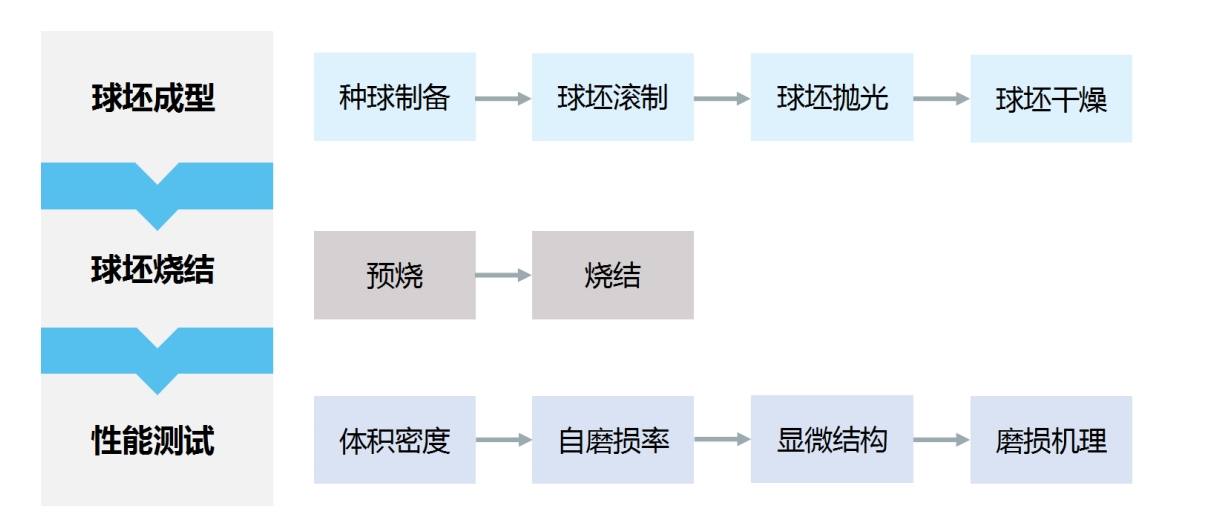Coal-fired power plants remain a cornerstone of global energy generation, providing reliable electricity to meet growing demand. Central to their operational efficiency is the coal grinding system, a critical component that crushes and grinds coal into fine particles, ensuring optimal combustion in boilers. Within this system, grinding balls serve as the "workhorses," driving the mechanical energy needed to reduce coal size efficiently. Without high-quality grinding balls, coal grinding systems would struggle with low throughput, excessive energy consumption, and frequent equipment failures, directly impacting power plant productivity and energy output. This article explores the vital role of grinding balls in power plant coal grinding systems, their key functions, material selection, and the benefits they bring to energy generation operations.

Key Functions of Grinding Balls in Coal Grinding Systems
Grinding balls perform two primary functions in coal grinding systems: crushing and grinding. As coal enters the mill, the rotating cylinder or bowl subjects the coal to intense mechanical stress, with grinding balls—typically made of steel or high-chromium cast iron—colliding with and crushing coal particles. Over time, repeated impacts and friction reduce coal to the desired fine powder, which is then transported to the boiler for combustion. The efficiency of this process depends on the balls' size, density, hardness, and impact resistance. For instance, larger balls excel at initial crushing, while smaller, harder balls refine the coal into finer particles, ensuring better heat transfer and combustion efficiency. Without properly sized and durable grinding balls, the coal grinding process becomes inefficient, leading to increased energy input and lower-quality coal, both of which hinder energy generation.
Material Selection: The Foundation of Grinding Ball Performance
The material of grinding balls directly determines their performance, durability, and suitability for coal grinding systems. High-chromium cast iron (HCCI) grinding balls are widely preferred in power plants due to their exceptional combination of hardness and toughness. HCCI balls contain 10-15% chromium, which forms hard chromium carbide compounds during heat treatment, significantly enhancing wear resistance. This is critical in coal grinding, where coal's inherent hardness and impurities (e.g., ash, sulfur) accelerate wear on balls. In contrast, traditional steel balls, though cost-effective, often wear out faster, requiring more frequent replacements and higher long-term maintenance costs. Additionally, some power plants use tungsten carbide balls for ultra-hard coal or high-abrasive environments, though these are more expensive. Material selection must align with coal properties (e.g., hardness, moisture content), mill type (e.g., ball mill, tube mill), and operating conditions (e.g., temperature, rotation speed) to maximize system efficiency.
Benefits of Optimized Grinding Balls for Power Plant Operations
Investing in optimized grinding balls delivers multiple benefits that directly boost power plant energy generation and operational sustainability. First, improved grinding efficiency reduces the energy required to crush coal, lowering overall electricity consumption for the grinding system. For example, a power plant using HCCI grinding balls has shown a 15-20% reduction in mill electrical consumption compared to steel balls, translating to lower energy costs and higher net energy output. Second, longer service life and reduced wear minimize downtime for ball replacement, reducing unplanned outages and ensuring continuous power generation. A 2023 study by a leading energy research institute found that plants using HCCI balls experienced a 30% increase in ball life, reducing annual maintenance costs by an average of 12%. Finally, optimized grinding balls enhance coal fineness, leading to more complete combustion in the boiler, which reduces fuel waste and lowers emissions of greenhouse gases and pollutants, aligning with sustainability goals. Together, these benefits make grinding balls an indispensable investment for power plant efficiency and energy generation.
FAQ:
Q1: What are the main materials used for grinding balls in coal grinding systems?
A1: The primary materials are high-chromium cast iron (HCCI), steel, and tungsten carbide. HCCI is most common due to its high wear resistance and cost-effectiveness, while steel is used for lower-abrasion coal, and tungsten carbide for ultra-hard coal.
Q2: How do grinding ball properties affect energy generation in power plants?
A2: Optimized balls improve grinding efficiency, reducing energy consumption for coal crushing. They also extend equipment life, minimize downtime, and enhance coal fineness for better combustion, directly boosting energy output and reducing operational costs.
Q3: What factors should be considered when choosing grinding balls for a coal grinding system?
A3: Key factors include coal hardness, mill type, operating conditions (temperature, speed), budget, and wear resistance requirements. HCCI balls are ideal for most power plants, while tungsten carbide may be needed for extremely abrasive coal or high-stress environments.

